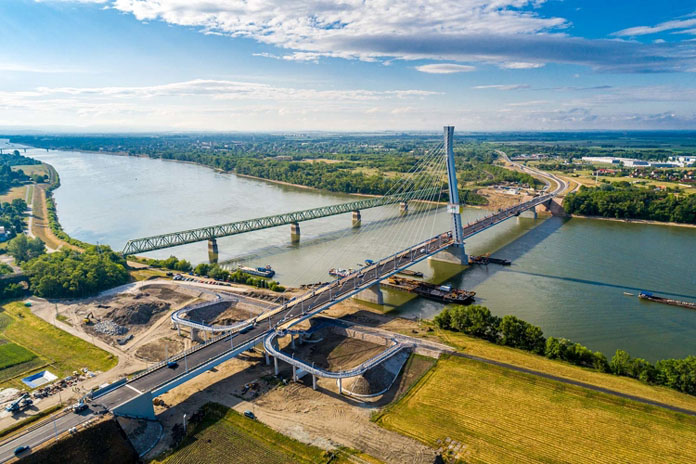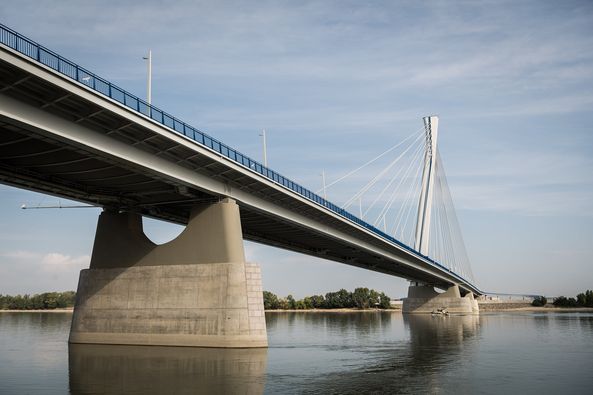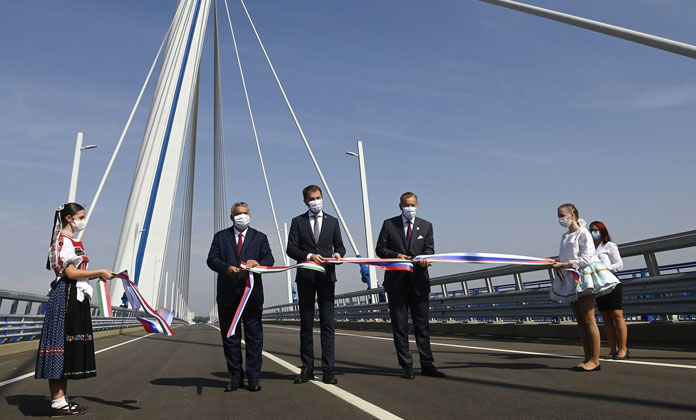
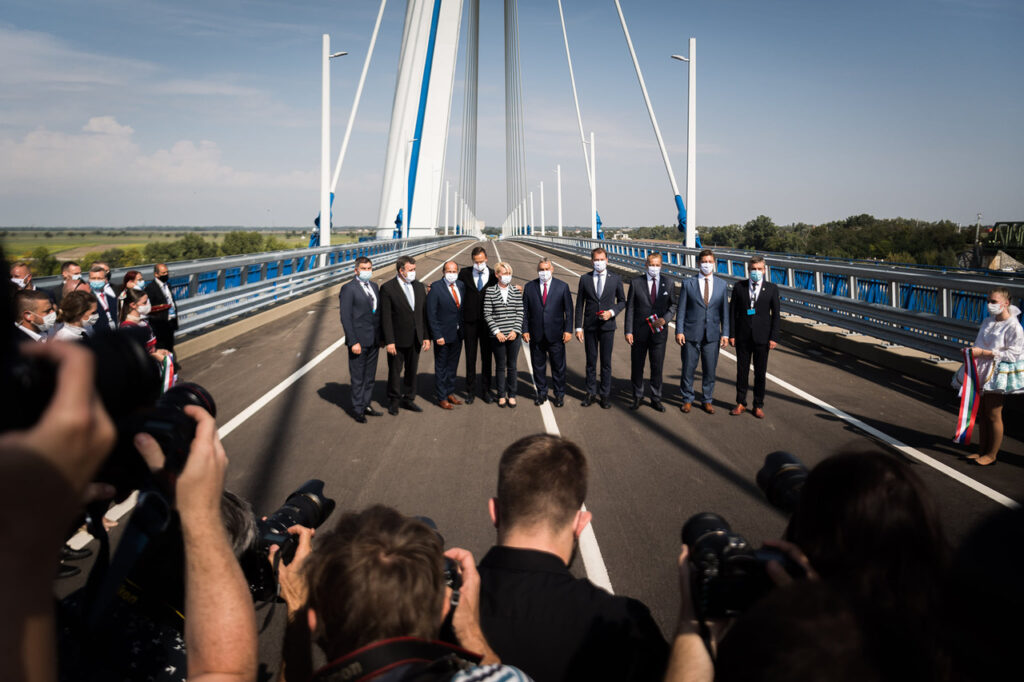
The foundation stone was laid on the 17th October 2017, and the building was a joint investment by National Infrastructure Development Corporation (NIF) and Slovenská Správa Ciest (SSC). The EU’s network funding instrument Connecting Europe Facility (CEF) financed 85% of the total cost of the net € 91.2 million project. The 600-metre-long, two-lane, one-pylon, sloping cable-stayed bridge is the tallest Danube bridge that can be used by cars, trucks, machinery and pedestrians and cyclists, as well. The height of the pylon from the bottom of the Danube is 118 metres, of which a 98-metre segment rises spectacularly above the water. The steel structure has a total weight of 7,180 tons, plus cables weighing 320 tons. The new bridge relieves the burden on the Erzsébet Bridge in Komárom built at the end of the 19th century and shortens the Slovak-Hungarian freight route by 100 kilometres.
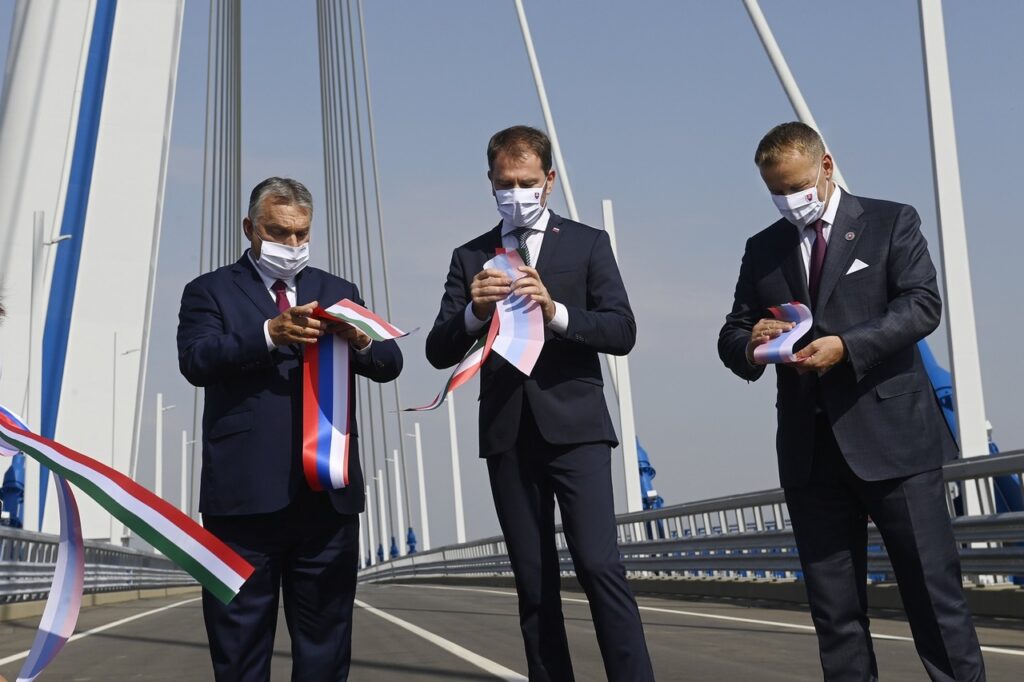
MTI – Koszticsák Szilárd 
The Monostori Bridge is the two states’ undivided, common property. Since the EU is a co-financer, it is also a connecting symbol to the EU itself.
Speaker of the Slovak Parliament Boris Kollár, Minister of Foreign Affairs and Trade Péter Szijjártó, Minister of Innovation László Palkovics, and Slovak Minister of Transport Andrej Dolezal also attended the ceremony.
As part of the project, a Slovak-Hungarian bridge construction dictionary was also created in excellent cooperation of the engineers of the two countries.
“The Danube does not separate, but connects the Hungarian and Slovak nations. History has taught us that we can only be successful in an alliance, not against each other,” Viktor Orbán emphasised. Hungarian–Slovak economic cooperation is in an unprecedented good state; Slovakia is the third most important foreign trade partner of Hungary, where 840 Slovak companies operate.
Source: Diplomatic Magazine





